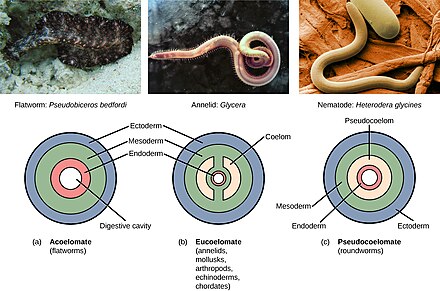Cells, tissues, organs and organ systems split up the work in a way that ensures the survival of the body as a whole and exhibit division of labour. A tissue is defined as group of cells along with intercellular substances performing one or more functions in the body. Epithelia are sheet like tissues lining the body’s surface and its cavities, ducts and tubes. Epithelia have one free surface facing a body fluid or the outside environment. Their cells are structurally and functionally connected at junctions.Diverse types of connective tissues bind together, support, strengthen, protect, and insulate other tissue in the body. Soft connective tissues consist of protein fibres as well as a variety of cells arranged in a ground substance. Cartilage, bone, blood, and adipose tissue are specialised connective tissues. Cartilage and bone are both structural materials. Blood is a fluid tissue with transport functions. Adipose tissue is a reservoir of stored energy. Muscle tissue, which can contract (shorten) in response to stimulation, helps in movement of the body and specific body parts. Skeletal muscle is the muscle tissue attached to bones. Smooth muscle is a component of internal organs. Cardiac muscle makes up the contractile walls of the heart. Connective tissue covers all three types of tissues. Nervous tissue exerts greatest control over the response of body. Neurons are the basic units of nervous tissue.
Notes
1. Complete Guide to Animal Kingdom Flowchart NEET 2024

It's estimated that around 9 or 10 million species of creatures inhabit the earth; the exact number isn't known and all estimates are rough.
Classification of Animal Kingdom was developed by Swedish botanist Carolus (Carl) Linnaeus in the 1700s. The Method of taxonomy known as Linnaean Taxonomy creates a hierarchy of groupings called taxa, as well as binomial nomenclature that gives each animal species a two-word scientific name.
In 1874, Ernst Haeckel divided the animal kingdom into the multicellular Metazoa (now synonymous with Animalia) and the Protozoa, single-celled organisms no longer considered animals. Understand the complete animal kingdom flowchart to learn the classification of animal kingdom precisely.
Introduction
Animals have several characteristics that set them apart from other living things. Animals are eukaryotic and multicellular, heterotrophic eukaryotes with aerobic respiration, sexual reproduction, and the ability to move. Let us learn about the animal kingdom flowchart, i.e., Kingdom Animalia.Classification of Animal Kingdom is based on a different basis, i.e., arrangement of cells, body symmetry, nature of coelom, and patterns of digestive, circulatory, or reproductive systems.
Animal Kingdom Flowchart

Figure : Classification of Animals (image from external sources)
animal kingdom flow chart
Classification of Animal Kingdom
Let’s understand these to further comprehend the different phyla of Animalia.
Levels of Organisation
All the members of Animalia are multicellular, and all of them do not exhibit the same pattern of organization of cells.For example, in sponges, the cells are arranged as loose cell aggregates, i.e., they exhibit a cellular level of organization.
While in coelenterates, the arrangement of cells is more complex and is arranged into tissues, hence is called the tissue level of organization.
A higher level of organization, i.e., organ level where tissues are grouped together to form organs, each specialized for a particular function. For example; Platyhelminthes and other higher phyla.
Digestive System
An incomplete system has only one opening to the outside of the body that serves as both the mouth and anus.Eg. Platyhelminthes.
A complete system that has two different openings a mouth and an anus.
Eg. Chordates.
Circulatory System
Open where oxygenated blood from the heart is pumped out directly into the body.Close where oxygenated blood from the heart is pumped into the body through a series of blood vessels.
Symmetry
Asymmetrical: When a vertical line passes through the central axis of the organism and divides it into two unequal halves.Eg. Sponges.
Radial: A line passing through the central axis divides the organism into two equal halves.
Eg. Coelenterates, and echinoderms.
Bilateral: A line passing through the central axis of the organism divides it into two similar halves.
Eg. Annelids, arthropods.
Diploblastic
Animals in which the organization of cells in a developing embryo occurs in two layers i.e; an external and internal layer and an undifferentiated, mesoglea, is present in between the ectoderm and the endoderm.
eg. Coelontrates.
Triploblastic
Animals in which a third germinal layer mesoderm is present in between the ectoderm and endoderm in a developing embryo.
eg. Platyhelminthes to Chordates.
Coelom
The coelom is the body cavity lined by mesoderm and is an important feature in the classification of organisms. It is present between the body and the gut wall of the body.
On the basis of coelom organisms are classified into coelomates, pseudocoelomates, and acoelomates:
Animals possessing true body cavities originating from mesoderm and lined by epithelial cells of mesoderm are called coelomates.
In some animals, the cavity between the body and gut is not actually lined by mesoderm instead mesoderm is present as scattered pouches, called pseudocoelomates.
Eg. Aschelminthes.
Animals with no body cavity are called acoelomates, filled by parenchymatous tissue.
Eg. Platyhelminthes.

different types of coelom
Segmentation
The body of various animals is separated into different parts on the outside and inside withserial repetition.
For instance, an earthworm exhibits a pattern known as metameric segmentation
and the phenomenon is known as metamerism.
Notochord
The notochord is a rod-like structure that forms on the dorsal side [posterior] during embryonic development in some animals. The notochord originated by the mesodermal cells and is the defining structure of the chordates, and has essential roles in vertebrate development.Phylum Porifera
These are commonly known as Sponges.They are generally marine and mostly asymmetrical animals.
The most important feature of this phylum is the presence of a water canal system.
Small openings (ostia) in the body wall allow water to pass into the spongocoel, a central cavity from which it leaves through the osculum.
This canal is useful for waste removal, respiratory exchange, and food collection.
A skeleton comprised of spicules or spongin fibers supports the body.
Sexes are not distinct (hermaphrodite), meaning that the same person produces both eggs and sperm.
Both asexual and sexual reproduction in sponges includes the formation of gametes.
Internal fertilization occurs during indirect development, and the larval stage differs morphologically from the adult stage.
Examples: Sycon (Scypha), Spongilla (Freshwater sponge), and Euspongia (Bath sponge).
Phylum Coelentrata(Cnidaria)
Cnidoblasts or cnidocytes, which are found on the body and tentacles and contain stinging capsules or nematocytes, are a defining property of coelenterates. Cnidoblasts are used for prey capture, defense, and anchoring.They have a single opening in the center of their gastro-vascular cavity.
Some of these species live in colonies (corals). Some have a solitary [living alone] like–span (hydra).
The skeleton of some cnidarians, like corals, is made of calcium carbonate.
The primary body types of cnidarians are the polyp and the medusa. The latter is an umbrella-shaped, free-swimming organism like Aurelia or jellyfish, whereas the former is a sessile and cylindrical form like Hydra, Adamsia (Sea anemone), etc.
Cnidarians that live in both forms demonstrate metagenesis, or alternation of generation, in which medusae develop from polyps sexually and produce medusae asexually (e.g., Obelia).
Digestion is extracellular and intracellular.
Examples: Aurelia (jellyfish), Physalia (Portuguese man-of-war), Adamsia (Sea anemone), Pennatula (Sea-pen), Gorgonia (Sea-fan), and Meandrina (Brain coral).
Phylum Ctenophora
Common names for Ctenophora include sea walnuts and comb jellies.They are diploblastic, primarily marine, and radially symmetrical.
Eight exterior rows of ciliated comb plates on the body facilitate movement.
Digestion is both extracellular and intracellular.
Ctenophores display bioluminescence, the ability of a living organism to emit light which is a characteristic feature of this phylum.
The only method of reproduction is sexual, and the sexes are not separate.
External (external to the body) fertilization results in indirect development (zygote to larva to animal).
Examples: Pleurobrachia and Ctenoplana.
Phylum Platyhelminthes
The term "flatworm" refers to an animal whose body is flattened dorsoventrally, or from top to bottom.They could be parasitic or free-living. There are hooks and suckers in parasitic forms. Free-living creatures like planarians.
Parasites are primarily endoparasites that can infect both humans and other animals. Some of them immediately absorb nutrients from the host through the surface of their bodies.
Specialized cells known as flame cells help in excretion and osmoregulation.
The sexes are not distinct.
Fertilization is internal and development is indirect.
Some members like Planaria possess high regeneration capacity.
Examples: Planaria, Liver Fluke, and Tapeworm.
Phylum Aschelminthes (Nemotoda)
Aschelminthes have cylindrical bodies as compared to flattened ones.They live independently, in the water, on land, or as parasites in both plants and animals.
These are well-known as parasitic worms that cause diseases, like the worms that cause elephantiasis (filarial worms) or the worms in the intestines (roundworms).
Due to the body's circular cross-section, roundworms are so named.
The alimentary canal is complete.
An excretory tube transfers bodily wastes from the body cavity Through the excretory opening.
Sexes are distinct (dioecious).
Females are longer than males.
Internal fertilization results in development that can be either direct (the young resemble the adult) or indirect.
Example: Ascaris, Wucheria.
Phylum Annelida
Aquatic (marine and freshwater) or terrestrial, free-living, and occasionally parasitic.The distinctive feature of this phylum is that its body surface is clearly divided into segments or metamers.
They have circular and longitudinal muscles that facilitate movement.
Aquatic annelids like Nereis have parapodia, which are lateral appendages that help in swimming.
Closed circulatory system.
Nephridia, also known as nephridium, aids in excretion and osmoregulation.
The neural system is made up of two double ventral nerve cords and two paired ganglia.
Earthworms and leeches are monoecious (having both the male and female reproductive organs in the same individual), whereas Nereis is dioecious (Sexes are separate).
Sexual reproduction.
Examples: Nereis, Pheretima (Earthworm), and Hirudinaria (Bloodsucking leech).
Phylum Arthropoda
It is the largest phylum of the animal kingdom which includes insects.Arthropods have segmented bodies, jointed legs, and hard, exterior shells known as "exoskeletons."
Their body is divided into three parts head, thorax, and abdomen which are all covered with chitin.
Open circulatory system.
Gills, book gills, book lungs, or the tracheal system are examples of respiratory organs.
There are sensory organs like antennae, simple and compound eyes, statocysts, and balancing organs.
Malpighian tubules are used for excretion.
Most of them are dioecious.
Internal fertilisation.
Most of them are oviparous.
Direct or indirect development is possible.
Examples: Apis (Honey bee), Bombyx (Silkworm), Laccifer (Lac insect), Anopheles, Culex and Aedes (Mosquitoes), Locusta (Locust), Limulus (King crab).
Phylum Mollusca
Mollusca are the second largest animal phylum.They are terrestrial or aquatic.
Open circulatory system and excretory organs resembling kidneys. Sensory tentacles are located in the anterior head area.
The radula, a rasping organ for eating that resembles a file, is located in the mouth.
They often have indirect development and are dioecious and oviparous.
Unsegmented body with a distinct head, muscular foot, and visceral hump, protected by a calcareous shell. The visceral hump is covered by a covering of soft, spongy skin.
Examples: Octopus, snails and mussels.
Phylum Echinodermata
These creatures are known as Echinodermata because of their calcium carbonate endoskeleton, or calcareous ossicles (spiny skinned organisms).They are exclusively free-living marine animals.
Echinoderm larvae are bilaterally symmetrical whereas adult echinoderms are radially symmetrical.
Their peculiar feature is water-driven tube system [water vascular system] is used for locomotion, capture, and transport of food and respiration.
Complete digestive system. No excretory system.
Sexes are distinct. Sexual reproduction. External fertilisation..
Indirect development of a free-swimming larva.
Examples: Starfish, Sea urchin, Sea lily, Sea cucumber, and Brittle star.
Phylum Hemichordata
A small group of marine creatures that look like worms and are organized at the organ-system level.They are triploblastic, cylindrical coelomates that are bilaterally symmetrical.
The body is cylindrical and is composed of an anterior proboscis, a collar, and a long trunk.
Open circulatory system.
Gills are used for respiration.
The excretory organ is there.
Different male and female sexes. External fertilisation. Indirect development.
Examples: Balanoglossus and Saccoglossus.
Phylum Chordata
Characteristic features of Chordates:1. A notochord
2. A dorsal hollow nerve
3. Paired pharyngeal gill slits
4. Post-anal tail
Phylum chordate is further divided into three subphyla:
1. Urochordata or Tunicata
2. Cephalochordata
3. Vertebrata
Urochordates and cephalochordates are referred as protochordates. In Urochordates, the notochord is present only in the larval tail, and in cephalochordates, it is extended from head to tail and present throughout life.
Examples: Urochordata – Ascidia, Salpa, Doliolum; Cephalochordata – Branchiostoma (Amphioxus or Lancelet).
During the embryonic stage, the notochord is present in the members of the subphylum Vertebrata replaced by a bony or cartilaginous spinal column in the adult.
Thus all chordates are not vertebrates, but all vertebrates are chordates.
Vertebrates contain paired appendages that can be fins or limbs in addition to the basic chordate characteristics. They also have a ventral muscular heart with two, three, or four chambers, kidneys for excretion and osmoregulation, and kidneys.
Class Pisces
Class Cyclostomata
Cyclostomes are marine organisms that migrate to freshwater to spawn. They die within a few days of spawning.After metamorphosis, their larvae return to the ocean.
All living Cyclostomata members are ectoparasites on some fish.
They have long body with 6-15 pairs of gill slits for breathing.
Cyclostomes have circular sucking mouth with no jaws.
They lack scales and have paired fins.
The cranium and vertebral column are made of cartilage.
The circulation is of the closed type.
Examples: Petromyzon (Lamprey) and Myxine (Hagfish).
Class Chondrichthyes
They are streamlined marine animals with cartilaginous endoskeleton. The mouth is located ventrally.The notochord remains constant throughout life.
Gill slits are distinct and lack an operculum (gill cover).
The skin is tough and covered in small placoid scales.
Teeth are modified placoid scales that are oriented backward.
Their jaws are extremely powerful.
They live by preying on other animals.
Due to the lack of an air bladder, they must swim constantly to avoid sinking.
Two-chambered heart (one auricle and one ventricle).
Some of them have electric organs (for example, Torpedo), while others have poison stings (e.g., Trygon).
Some of them have electric organs (for example, Torpedo), while others have poison stings (e.g., Trygon). old-blooded (poikilothermous) animals, which means they cannot regulate their body temperature.
The sexes are distinct. Male pelvic fins have claspers.
Internal fertilization and viviparous in many cases.
Examples: Scoliodon (Dog fish), Pristis (Saw fish), Carcharodon (Great white shark), Trygon (Sting ray).
Class Osteichthyes
It includes both freshwater and marine fish with a bony endoskeleton. Their body is streamlined. The mouth is primarily terminal.Four pairs of gills on each side, are covered by an operculum.
Cycloid/ctenoid scales cover the skin.
An air bladder is present which regulates buoyancy.
Two-chambered heart (one auricle and one ventricle).
Cold-blooded.
Distinct male and female sexes. Fertilization is typically done externally.
They are mostly oviparous and development is direct.
Examples: Marine – Exocoetus (Flying fish), Hippocampus (Sea horse); Freshwater – Labeo (Rohu), Catla (Katla), Clarias (Magur); Aquarium – Betta (Fighting fish), Pterophyllum (Angel fish).
Class Amphibia
Amphibians can live in both aquatic and terrestrial environments.They all have two pairs of limbs.
The body is divided into two parts: the head and the trunk. Some individuals may have a tail.
Amphibian skin is moist (without scales). Eyelids cover the eyes. The ear is represented by a tympanum.
The alimentary canal, urinary tract, and reproductive tract all connect to a common chamber called the cloaca, which opens to the outside.
Respiration occurs via the gills, lungs, and skin.
Three-chambered (two auricles and one ventricle) heart.
Cold-blooded animals.
Males and females are different. Fertilization is done externally.
They are oviparous and development is indirect.
Examples: Bufo (Toad), Rana (Frog), Hyla (Tree frog), Salamandra (Salamander), Ichthyophis (Limbless amphibia).
Class Reptilia
This class refers to their creeping or crawling mode of locomotion (Latin, repere or reptum, to creep or crawl).They are mostly terrestrial animals with dry and cornified skin, epidermal scales, or scutes covering their bodies.
They have no external ear opening. Tympanum represents ear.
Limbs are always found in pairs.
The heart is usually three-chambered, but four-chambered in crocodiles.
Poikilotherms (cold-blooded) animals.
The sexes are distinct.
Internal fertilisation occurs.
They are oviparous and development is direct.
Examples: Chelone (Turtle), Testudo (Tortoise), Chameleon (Tree lizard), Calotes (Garden lizard), Crocodilus (Crocodile)
Class Aves
The characteristic feature is the presence of feathers and most of them can fly except flightless birds (e.g., Ostrich).They have a beak.
The forelimbs have been transformed into wings. The hind limbs are usually scaled and modified for walking, swimming, or grasping tree branches.
Except for the oil gland at the base of the tail, the skin is dry and lacks glands.
The endoskeleton is completely ossified (bony), and the long bones are hollow and filled with air cavities (pneumatic).
The crop and gizzard are additional chambers in the digestive tract of birds.
Heart with four chambers.
Warm-blooded (homoiothermous) animals, that is, can keep their body temperature constant.
The lungs are responsible for respiration. Air sacs connected to the lungs help in respiration.
The sexes are distinct.
Internal fertilisation occurs.
They are oviparous and undergo direct development.
Examples: Corvus (Crow), Columba (Pigeon), Psittacula (Parrot), Struthio (Ostrich), Pavo (Peacock), Aptenodytes (Penguin), Neophron (Vulture).
Class Mammalia
They can be found in a wide range of environments, including polar ice caps, deserts, mountains, forests, grasslands, and dark caves.Some of them have developed the ability to fly or live in water.
The presence of milk-producing glands (mammary glands) that nourish the young is the most distinctive mammalian feature.
They have two pairs of limbs that allow them to walk, run, climb, burrow, swim, or fly.
Mammalian skin is unique in that it contains hair. There are external ears or pinnae. The jaw contains various types of teeth.
Four-chambered heart.
Warm-blooded animals.
They have lungs for respiration.
Sexes are distinct and internal fertilization.
With a few exceptions, they are viviparous, and development is direct.
Oviparous-Ornithorhynchus (Platypus); Viviparous - Macropus (Kangaroo), Pteropus (Flying fox), Camelus (Camel), Macaca (Monkey), Rattus (Rat), Canis (Dog), Felis (Cat), Elephas (Elephant), Equus (Horse), Delphinus (Common dolphin), Balaenoptera (Blue whale), Panthera tigris (Tiger), Panthera leo (Lion).
Practice Tests

Structural Organisation in Animals Biology (Class 11th) Revision Test | MCQs for NEET
This practice test includes 25 important multiple choice questions from the chapter structural Organisation In Animals Class 11th Biology. These MCQs
4.59M Join the discussion.
More in this Chapter..

Structural Organisation in Animals Biology (Class 11th) Revision Test | MCQs for NEET
This practice test includes 25 important multiple choice questions from the chapter structural Organisation In Animals Class 11th Biology. These MCQs
4.59M Join the discussion.

Complete Guide to Animal Kingdom Flowchart NEET 2024
Animals have several characteristics that set them apart from other living things. Animals are eukaryotic and multicellular, heterotrophic eukaryotes
4.59M Join the discussion.
.png)

















.jpg)








 संज्ञा
संज्ञा